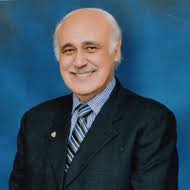
‘I shall live, I shall flourish, I shall wake up in peace’. These words from their Book of the Dead made Ancient Egyptians believe in an after-life and to practice unique funerary practices continuously for over 2,000 years.
No necropolis in the world can compare with Egypt’s Valley of Kings – not St George’s Chapel in Windsor Castle where kings of England are buried, nor the Imperial Crypt in Vienna where over a hundred Hapsburgs are interred, not the Peter and Paul Cathedral in St. Petersburg where the Romanovs await resurrection, not even the coned mausoleum of the first Qin dynasty Chinese emperor in Xi’an.
Like the expansive necropolis at Xi’an (yet to be uncovered in its entirety), Thebes in Egypt is largely unexplored. New tombs are being discovered, though none as complete as the treasure trove found in Tutankhamun’s grave in 1922.
Over the centuries, grave robbers pillaged the tombs of their pharaohs, leaving mummified bodies behind. Miraculously, the remains of many famous pharaohs and their consorts were retrieved and in the 1880s were sent for safe-keeping to Cairo. ‘As these long-dead Pharaohs sailed down the Nile by steamer, fellahin lined the banks at village after village, the women ululating in lament, the men firing their rifles in homage.’
These desiccated royals remained on ignominious display in the Egyptian Museum in Tahrir Square for years. That overcrowded museum had so much material from the various epochs of Egypt’s past – Ancient, Roman, Byzantine, Christian, Coptic, Arab and Turkish – that an expert calculated that if a visitor spent one minute viewing each object in its collection, it would take nine months to see everything. Tourists never had that much time. Resident Cairenes preferred to use that gestation period to produce more Cairenes.
The need for larger, better equipped and more specialised museums became unavoidable. After years of vacillation, on 3 April 2021, a new National Museum of Egyptian Civilization, was inaugurated in Fustat, 3 miles away from Cairo.
In a spectacular procession named ‘The Pharaohs’ Golden Parade’ (the sort of grand cortege Lord Mountbatten would have died for), the mummies of 18 kings and four queens were transported there, enveloped in protective nitrogen gas, and driven in specially designed vehicles that followed the chronological order of their reigns.
Notable amongst them were Queen Hatshepsut (1486-1468 BC), King Amenhotep II (1427-1407 BC), King Seti I (1302-1290 BC), and the famous King Ramses II (1279-1213 BC).
On arrival in their new home, they were received by their 21st century successor – President Abdel-Fattah el-Sisi. A former Head of Military Intelligence and a Field Marshal, el-Sisi is the fifth in line of a dynasty of military rulers – General Naguib, Lt. Col. Gamal Nasser, Col. Anwar Sadat, and Air Chief Marshal Hosni Mubarak.
From President el-Sisi’s proud posture on the podium, it became clear that the spectacular procession costing millions of dollars that snaked before him was his personal brainchild, as much as the extravagant celebrations at Persepolis fifty years ago, to celebrate 2,500 years of the Persian Empire, were the wish-fulfillment of the Shah of Iran M. Reza Shah. The Shah however had oil revenues to burn; the millions of tourist dollars expected by President el-Sisi from post-Covid-19 visitors to Egypt are yet to be generated.
It is interesting that the new Museum celebrates not just Egypt’s culture but its civilisation. It is in line with a pattern of historical revivalism finding voice in China, in India, even in Russia. For example, some years ago, a Putin-riche Russian oligarch bought nine Fabergé Easter eggs made for Czar Nicholas II, so that they could be returned home to Russia.
The new state of the art museum within reach of the pyramids will undoubtedly reinforce Egypt’s claim for the repatriation of its cultural heritage, most of which was looted and taken abroad. It is now scattered in impenitent museums across the western world.
The Greeks still struggle to have the marble statuary that once graced the Parthenon in Athens restored to their place of origin. Other countries are considering making similar demands for the restitution of their heritage. Nigeria, for example, wants its 16th C. Benin bronze statues returned. Meanwhile, Pakistan and India squabble over the territory of Jammu & Kashmir, the former India Office Library & Records (now the British Library), and the truncated Koh-i-noor diamond.
The respect accorded by modern Egyptians to the remains of their pharaohs – the golden parade, the reverential homage, the gun salutes – were more than showmanship. They were the fulfilment of prophecies contained in the Book of the Dead: ‘I shall not putrefy, my intestines shall not perish, I shall not suffer injury’.
The golden rebirth assured the pharaohs has come about in an unexpected way.
Fakir S Aijazuddin is a noted thinker and columnist of Pakistan

